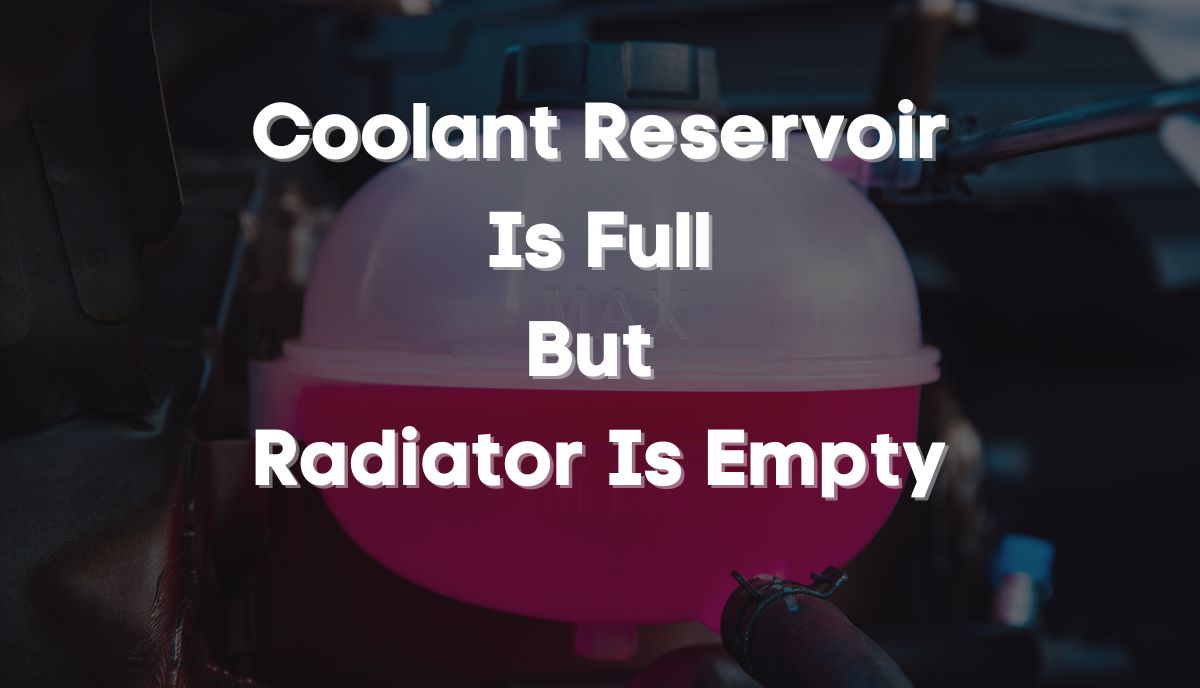Coolant overflows into the reservoir after expanding due to high temperatures. It will stay in the tank until the car cools. Then, it will flow into the radiator. You don’t expect the radiator to run empty when the reservoir is full. The following factors may explain this phenomenon:
1). The Gasket Has Blown

This diploma thesis from Czech Technical University, Prague, describes the head gasket as a component that seals the combustion chamber. According to Kia, that seal allows the car to maintain the engine’s power by building sufficient compression.
Laypeople expect a blown head gasket to encourage the coolant to leak into the oil. They don’t realize that a blown gasket can also introduce combustion gasses to the cooling system. Those gases will force the coolant into the reservoir. This can cause the coolant reservoir to burst, especially when the pressure builds to unsafe levels.
How To Fix It?
Combustion gases will create bubbles in the coolant. If cold coolant looks like it’s boiling, you can blame the combustion gases. A head gasket replacement costs $1,400 – $1,600. The gasket itself is not that expensive. However, the process of retrieving and replacing the gasket is time-consuming, resulting in exorbitant labor fees.
2). The Radiator Cap Doesn’t Work
The pressure in the cooling system increases with the coolant temperature. The vehicle uses a radiator cap to relieve the pressure.
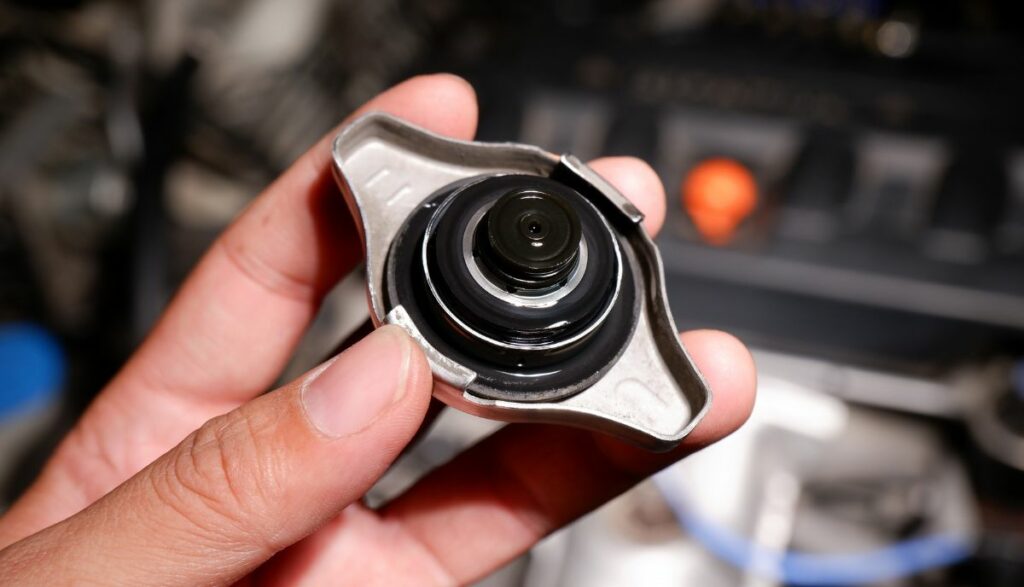
According to Sanket Bansod, Sudhir Gore, Ritesh Bhole, and Mihir Shetye in this paper from the Mechanical Engineering Department, Savitribai Phule Pune University, the radiator cap uses a spring-loaded plunger to send excess coolant to the reservoir when the pressure climbs beyond a specific threshold.
The substance will only suck out of the tank once the engine cools. A radiator cap can fail, continually releasing the coolant into the reservoir.
How To Fix It?
Faulty radiator caps will produce pools of coolant on the ground when you park (because of leaks), overheated engines, smoke from under the hood, overflowing reservoirs, and white streaks in the radiator, to mention but a few.
You can get a new radiator cap for $50 or less. Laypeople can replace this part without professional assistance.
3). The Hose Is Blocked

- How does the coolant reach the reservoir? It uses a hose that connects the radiator and reservoir tank.
- Hoses can fail because of high temperatures, excess pressure, old age, chemical corrosion, abrasion, etc.
- Symptoms of a bad hose include moisture marks on the hose, puddles of coolant on the floor whenever you park, visible damage, a soft, spongey texture, etc.
- Hoses can develop kinks which create blockages that prevent the coolant from flowing.
How To Fix It?
- Wait for the engine to cool before opening the hood and using your thumb and forefinger to squeeze the hose. Focus on the spot near the clamp.
- Take note of areas with a soft, mushy texture and crackling sounds. They point to a bad hose. A good hose is firm, pliable, and silent.
- Perform a visual inspection. Do you see cracks, bulges, and divots? Replace damaged hoses. The procedure costs $150 – $450.
- Replace your hoses and their clamps every 50,000 – 75,000 miles.
- Remove obstructions in the hose.
- You can straighten the kinks in hoses, but those kinks are more likely to reappear. You’re better off replacing the hoses.
4). The Radiator Is Blocked
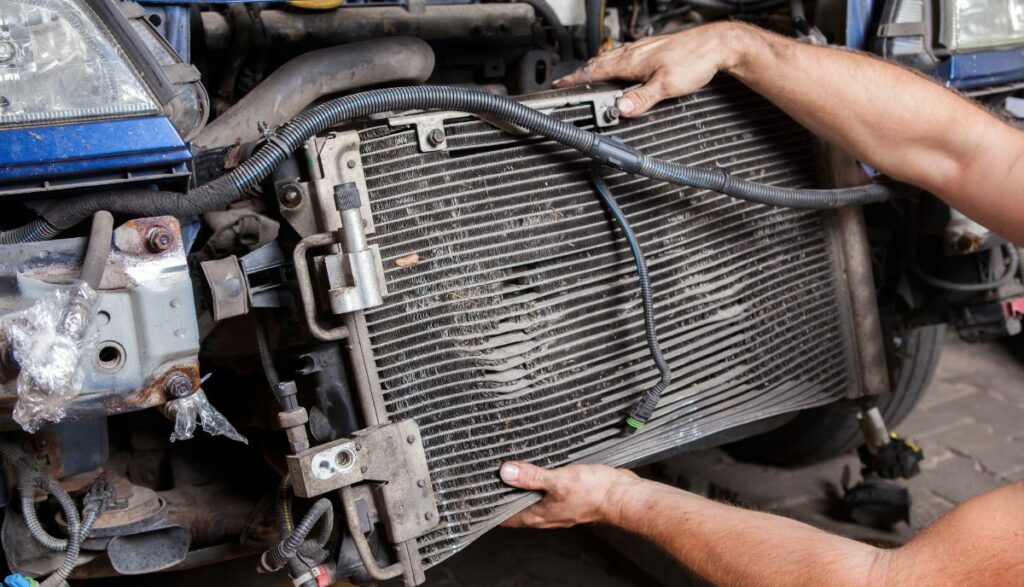
Radiators have pathways that allow the coolant to flow through as it cools. Unfortunately, those pathways can develop obstructions because of the following:
- Rust
- Debris and contaminants from the road.
- Accumulated sediment from the old coolant.
Symptoms of a blocked radiator include:
- The heater will stop working.
- The coolant will leak.
- The engine will overheat.
- Coolant levels will fall.
- Debris in the radiator can bend and break the radiator fins.
How To Fix It?
- Open the valve at the bottom to drain the coolant from the radiator.
- Drain the coolant from the engine block.
- Add radiator flush to the radiator.
- Run the car.
- Drain the substance.
- Use distilled water to rinse the radiator. If the water flows freely and smoothly, you’ve removed the blockage.
- Add new coolant.
- Take the car to an expert if the blockage persists. The average repair shop will charge $100 – $200 to flush the radiator.
5). The Thermostat Is Closed
Coolant usually reaches the radiator after moving through the engine and picking up heat. It runs to the radiator to cool off before commencing its journey through the engine. But the coolant will only flow if the thermostat opens.
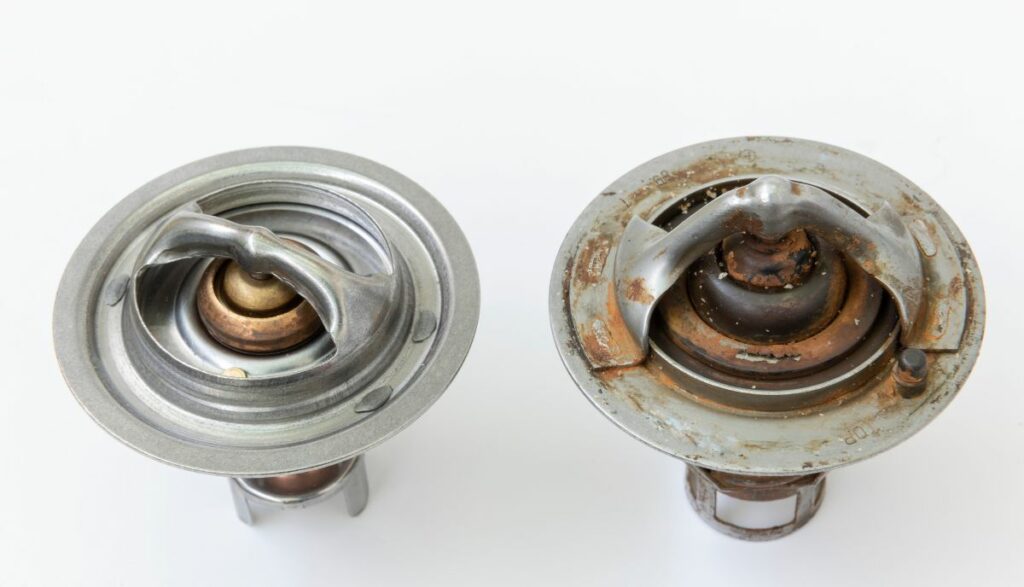
When you open the radiator and remove the cap, you see movement inside once the engine has been idling for ten to twenty minutes. The coolant will flow because the temperature is hot enough to compel the thermostat to open after twenty minutes.
A thermostat that refuses to open will prevent the coolant from flowing. That may explain the low coolant levels in the radiator.
How To Fix It?
A closed thermostat creates symptoms related to overheating because the coolant won’t flow. Many mechanics will check the radiator hose for confirmation. It may feel cold to the touch because the coolant is not moving.
Some experts prefer to test the thermostat with a multimeter (using the thermostat housing’s two-wire connector) before reaching any conclusions. You can also place the thermostat in hot water to see if it opens. You’re looking at $150 – $550 to replace a thermostat.
6). The Heater Core is Clogged
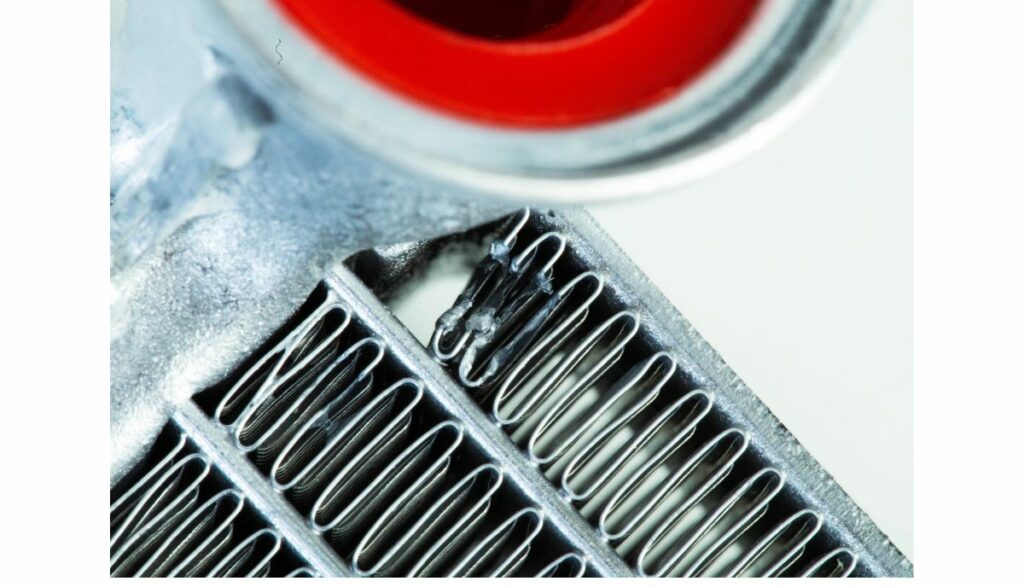
People ignore the heater core because it works with the air conditioning system to funnel heat into the vehicle’s cabin. They don’t realize that a heater core uses the engine’s coolant for heating and defogging purposes. In other words, a blockage in the core can affect coolant levels.
How To Fix It?
- Locate the heater core.
- Get an air compressor and push the airline into the outlet hose to remove coolant and grime from the heater core. A garden hose can achieve a similar objective.
- Use duct tape to seal the connection between the airline and the outlet hose. This allows the air compressor to build enough pressure to overcome stubborn obstructions.
- Give the contents of the heater core a chance to drain out.
- Replenish the coolant.
7). The Intake Manifold Gasket Is Damaged
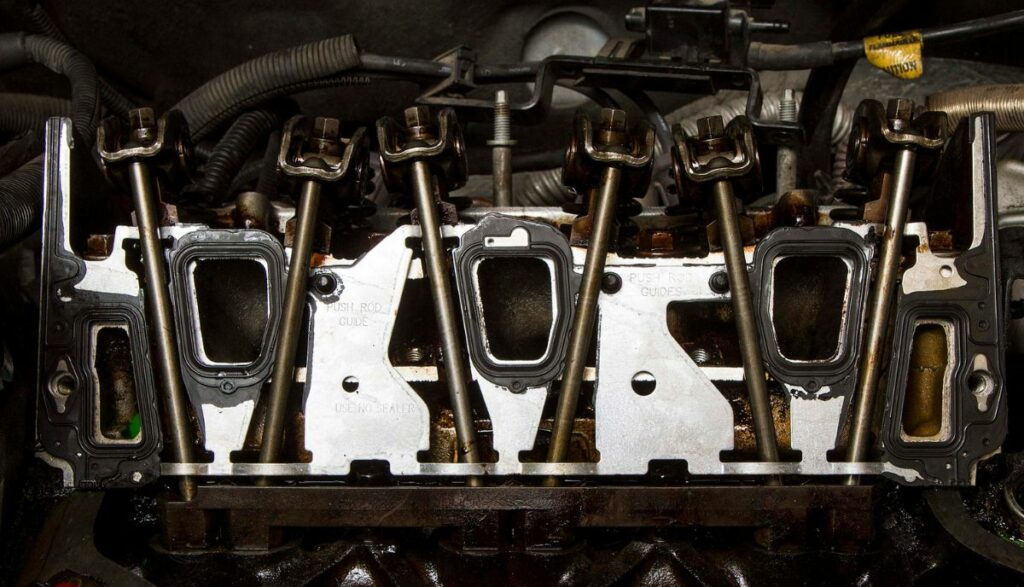
The intake manifold gasket keeps the coolant system sealed. Therefore, a damaged gasket will allow the coolant to escape. Some leaks are too small for you to notice initially. But if they persist, coolant levels will drop dramatically.
Look for symptoms that typically accompany overheating, such as poor engine performance, misfires, white smoke from the exhaust pipe, coolant contamination in the oil pan, etc.
How To Fix It?
The engine light will warn you that things have gone wrong. You will find this component between the intake manifold and the cylinder head. A replacement will cost you $80 – $400. The longer it takes the mechanics to access and retrieve the damaged gasket, the more money you will pay.
Symptoms Of Coolant Reservoir Full, Radiator Empty
How can you tell that the coolant reservoir is full but the radiator is empty? The following symptoms will let you know:
- Heat
If coolant refuses to flow through the radiator, the engine will overheat. It doesn’t have coolant to take the excess heat away.
- Sweet Scent
A sweet scent doesn’t prove that a radiator is empty while the reservoir is full. It merely shows that the coolant is leaking somewhere. The substance has a sweet smell. This should encourage you to check the radiator, hoses, and water pump for leaks. Don’t ignore a sweet scent.
- Puddles
Do puddles of coolant form on the floor under the car whenever you park? This is another symptom of a coolant leak. Again, it pushes you to inspect the cooling system for leaks. It doesn’t prove you have an empty radiator and a full reservoir. Use the symptom as a reason to troubleshoot the cooling system.
- Temperature Fluctuations
Laypeople expect a problem in the cooling system to result in overheating. But sometimes, the temperatures merely fluctuate. This can happen because of coolant leaks, a faulty thermostat (stuck closed or open), clogged hoses, corroded radiators, broken radiator fins, etc.
- Engine Light
The ‘Check Engine’ light will illuminate because the computer can tell something is wrong. Although it doesn’t know for sure that your car’s radiator is empty. You can attach an OBD scanner tool to retrieve the error codes.
- AC Malfunction
The cooling system’s faults will affect the air conditioner. For instance, the AC’s performance may deteriorate because the engine is overheating due to low coolant levels in the radiator.
- Discolored Coolant
The coolant will take on a milky coloration when the head gasket blows. This is because the oil has diluted the coolant. Coolant can also take on a brown color because of rust and sediments in the radiator and hoses.
These symptoms should push you to inspect the cooling system for faults responsible for an empty radiator and a full reservoir.

